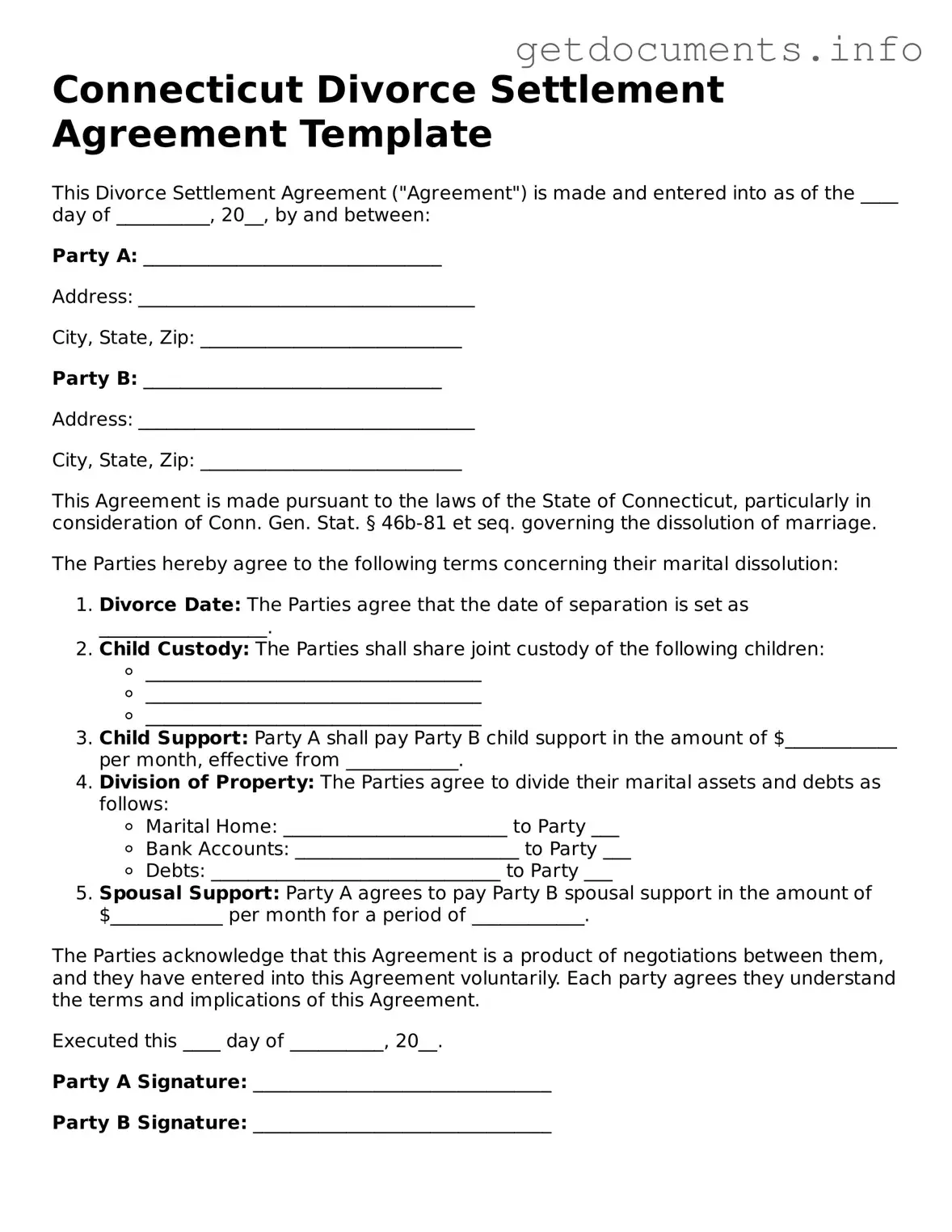Free Divorce Settlement Agreement Template for Connecticut
The Connecticut Divorce Settlement Agreement form is a legal document that outlines the terms agreed upon by both parties during a divorce. This form addresses key issues such as property division, alimony, child custody, and support, ensuring that both spouses have a clear understanding of their responsibilities. To get started on your divorce process, fill out the form by clicking the button below.
Access Divorce Settlement Agreement Editor
